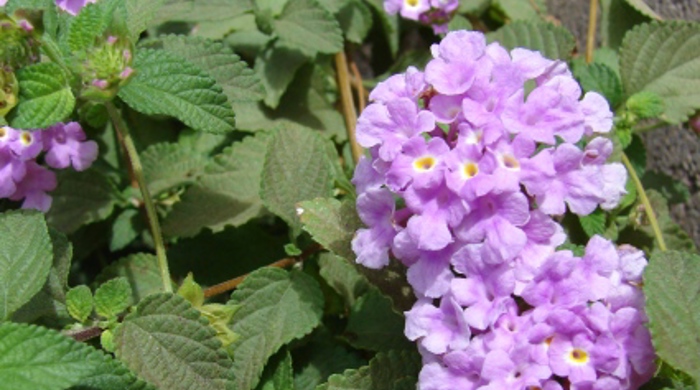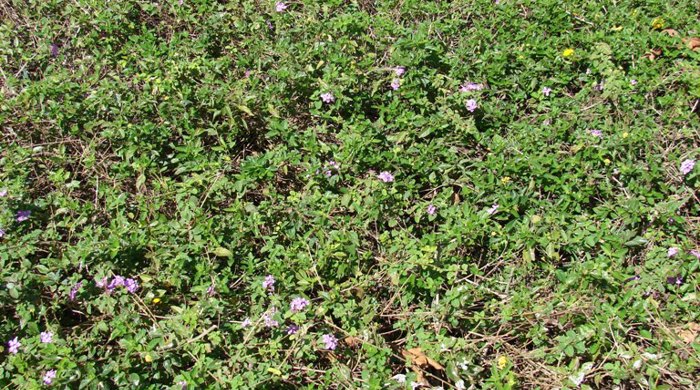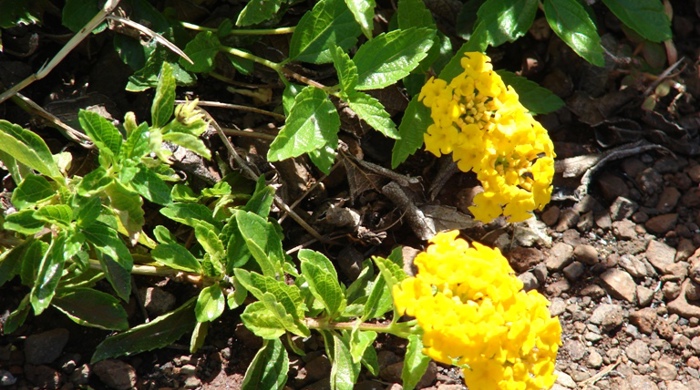Lantana montevidensis
Trailing lantana
Also known as:
Weeping lantana
Family: Verbenaceae
Origin: South America

Regional Pest Management Plan (RPMP) status
- Not a legally declared pest
General description
Low-growing, perennial, climbing, creeping or trailing shrub. Stems are slender and four-sided when young, turning cylindrical and woody with age. Leaves are ovate, opposite, finely toothed, rough on top and hairy underneath. Flowers are pink/purple with white/yellow throats and borne in dense clusters. Fruits are fleshy, green turning pink/red/purple and contain a single pale seed.
What you need to know
Although trailing lantana is not a legally declared pest plant, it may still be invasive in some situations. Consider lower risk alternatives for your garden, such as native plants.
Habitats
Disturbed sites, open areas, pastures, wasteland, roadsides.
Dispersal
Seeds dispersed by birds and other animals. Vegetative spread from stem fragments. Human-mediated dispersal through dumping of garden waste.
Impact on environment
Can form dense infestations. Poisonous to livestock.
Control
Site Management
Follow up treated areas 3 times per year. Encourage natural regeneration of native plants or replant treated areas where possible after 2-3 treatments to establish dense ground cover and minimise reinvasion.
Recommended approaches
Physical control
Method: Dig out.
Plant parts requiring disposal: Seeds.
Disposal options: Remove to greenwaste or landfill if practical.
Biocontrol
Biocontrol is currently not available for this species.
Community agrichemical control recommendations
No qualifications: Cut stump and paste freshly cut base of stems with double strength glyphosate gel. Foliar spray with 100ml glyphosate green per 10L of water.
Certified Handler/Experienced agrichemical user: Foliar spray with 100ml glyphosate green per 10L of water and 20ml penetrant.
Caution: When using any herbicide or pesticide please read the label thoroughly to ensure that all instructions and safety requirements are followed.






